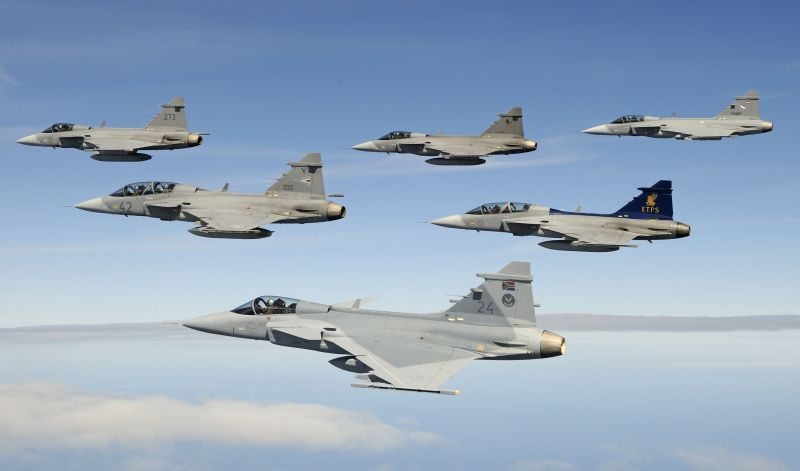On Friday 24 August 2012, the Swedish Defence and Security Export Agency, FXM, and its Swiss counterpart, armasuisse, signed a framework agreement on Switzerland’s procurement of 22 JAS 39 Gripen aircraft. This framework agreement will now form the basis of political decisions, both in Switzerland and Sweden.
“We are pleased to have reached this agreement, which will greatly benefit both countries’ defence. A partnership with Switzerland will give cost efficiency and enable, among other things, joint training,” says FXM Director-General Ulf Hammarström.
It was on 30 November last year that Switzerland announced that it had chosen Gripen as part of its future air defence. The choice was made on the basis of a tender from Saab, but in connection with the decision, the Swiss Government contacted its Swedish counterpart to look at the possibilities of joint procurement.
Since then, authorised by the Swedish Government, FXM has been talking with Switzerland to find the best solution for both countries with regard to the capabilities and technical contents of the aircraft, as well as delivery times and costs. FXM has undertaken this work in close cooperation with the Swedish Armed Forces and the Defence Materiel Administration.
On 29 June this year, Minister for Defence Karin Enström was in Switzerland to sign a declaration of intent that included finding synergies in the procurement, operation and further development of the Gripen system. The framework agreement signed by FXM and armasuisse on Friday builds further on this declaration of intent.
The framework agreement
The framework agreement negotiated covers three aspects. It covers the purchase of 22 Gripen E aircraft itself. The agreement means that Switzerland will make a first payment of CHF 300 million in 2014.
The framework agreement also covers long-term cooperation with regard to maintenance, support and further development during the system’s lifetime.
The third aspect is an interim solution – the leasing of 11 Gripen C/Ds during five years.
“Through it, we have reached an agreement that will be one of the bases on which the political levels will be able to decide. The agreement reached means that Switzerland will pay its share of the costs and that the country can keep within its budgetary framework of CHF 3.126 billion at the same time,” says Ulf Hammarström.
Advantages of a partnership
A partnership will be more cost-efficient over the entire system’s lifecycle. What it means, among other things, is that a large number are procured at the same time. Joint repairs, maintenance and further upgrading provide cost efficiency. It is also positive for the air forces, through providing opportunities for cooperation on education and training activities.










